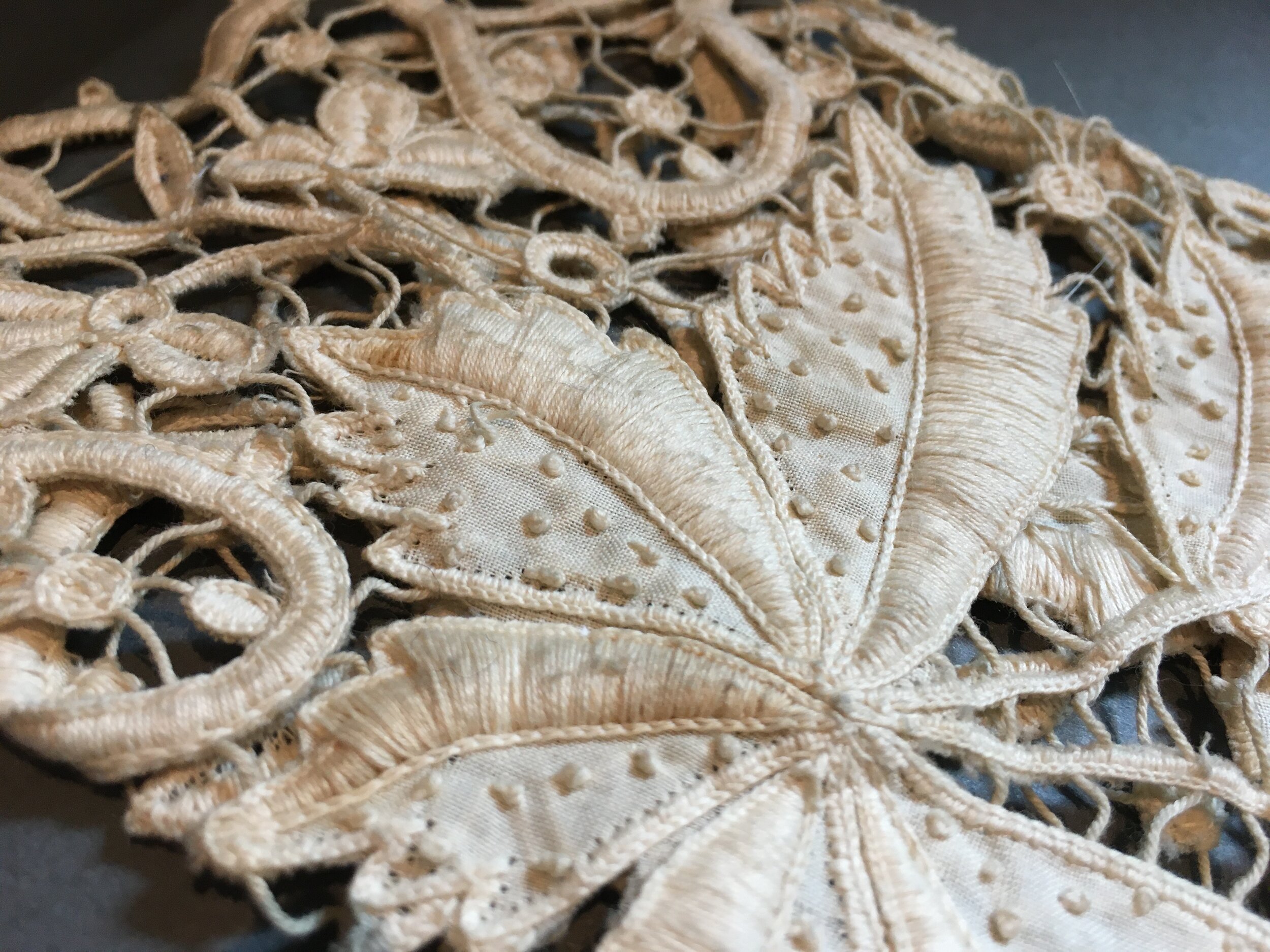
Embellish
Embellish
This collection features examples of lacemaking. Lace was first developed in Europe in the 1500s. There were two types of lace: needle lace which uses a single needle and thread, and bobbin lace which uses multiple threads that were plaited together. Lace was expensive because it was time-consuming and intricate work. However, handmade lace remains popular
Focus on lace
A piece by lacemaker and lace historian Pompi Parry
To answer the question, what interests me about lace – the simple answer would be –everything– to enlarge on what this one word encompasses would take nearly as long as I’ve been involved in the lace world, that is since 1974!
I’m an enquiring person and my first question all those years ago was “what were these lace bobbins I saw at an auction sale used for?” Made of wood or bone, decorated with names, dates and messages, some inlaid with pewter, with a circle of pretty glass beads hanging on one end; why did you need so many? So, I learnt to make lace.
My decision to only make lace and collect old bobbins, and not to investigate old lace, was soon undone by a friend of my mother’s emptying out a large bag of old lace she’d bought at a sale. “How could all this lovely old work be so cheap and how could I make new lace and not know anything of its history?”
Downton lace Christening Gown, ©The Salisbury Museum collection
So, next came learning to identify different types of laces, where and when they were made- an on-going process, the more one researches the more new channels of investigation open up!
Next –questions; who was designing the laces, who were the lace makers, where were the threads manufactured, who made the bobbins, the lace pillows, pins and parchment needed to work the lace, what was the marketing and distribution, and then who was wearing the lace?
This led to my next two lives –teaching lacemaking and researching the history of dress, (and a subsequent MA) after all, Lace has been an intrinsic and important part of outfits, as well as use in home furnishing and the church, since the late 15thC.
Today, lace is made following traditional patterns, or as a contemporary art form. Using threads from as fine as hair - up to steel rope.
Moving into the Salisbury area in 1983, and with children attending school in Downton, I felt the need to research the local lace, Downton Lace. Here was the start of another life!
Buckinghamshire, Bedfordshire, and Honiton; the main lacemaking areas of England were already well known and documented, but here tucked away in this corner of Wiltshire was a previously little-known lace gem.
Lace making was already a well-established industry in Salisbury early in 17thC, shown by the records of the Poor Laws, which names Lace apprentices and their ‘Mistresses’. Salisbury continued to be an important centre for Lace, with consignments being frequently sent to London, until the early 1800s. From then on, the Industry was centred around the Downton area, but following the general trend of handmade lace, declined in the mid 19thC.
At the beginning of the 20thC two local ladies resurrected lacemaking as a philanthropic cottage industry ‘The Downton Lace Industry’. When this Industry closed in 1965 all records, patterns, samples, bobbins, pillows and artefacts were donated to the Salisbury Museum. It is quite rare to have such a comprehensive record of a lace industry and it is only by studying the lace samples have we been able to establish the unique techniques of Downton Lace.
Research by myself and colleagues have amassed a large collection of lace Social History and technical information.
by Pompi Parry, Look Again project volunteer, Lace historian, and Teacher of Lacemaking.
Downton lace Christening Gown, ©The Salisbury Museum collection




